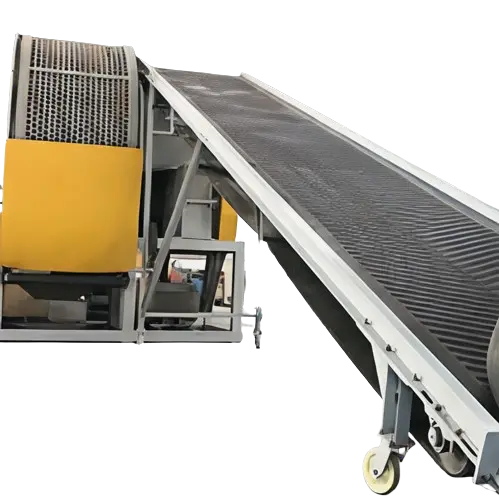Sustainable Tyre Recycling: A Journey with Advanced Machinery
The relentless growth of the global tyre industry has led to an exponential increase in tyre waste, estimated at over 1.5 billion tyres annually. This poses a significant environmental challenge, with tyre waste contributing to pollution, resource depletion, and the release of harmful substances like heavy metals and greenhouse gases. An estimated 80% of tyre waste ends up in landfills, where it decomposes slowly and releases methane, a potent greenhouse gas that exacerbates global warming. The urgency of addressing this issue is critical, and advancements in tyre recycling technology offer a promising solution to these pressing issues.
Embracing Sustainable Tyre Recycling
Every year, the world generates over 1.5 billion tyres, a staggering number that underscores the magnitude of the issue. Tyres are not just any waste; they are complex mixtures of rubber, steel, and carbon fibres, making them difficult to process effectively. Traditional methods often involve improper handling, leading to pollution and the release of harmful substances such as VOCs (volatile organic compounds). Moreover, the lack of standardized recycling infrastructure exacerbates the problem, resulting in inefficient recycling processes and poor outcomes. Many recycling facilities operate at subpar levels, further reducing their effectiveness.
The environmental crisis of tyre waste is multifaceted and requires immediate attention. Traditional methods of disposal leave a significant environmental footprint, and the decomposition of tyre compounds can take hundreds of years, releasing methane, a potent greenhouse gas. Despite the magnitude of this issue, there is hope on the horizon. Advancements in tyre recycling technology are paving the way for a more sustainable future. Technologies such as advanced machinery are playing a pivotal role in transforming the way we handle tyre waste. These machines are designed to handle the complexities of tyre structures, separating and processing different components efficiently. They facilitate the conversion of tyre materials into valuable resources, reducing waste and enhancing environmental sustainability.

Exploring the Challenges in Tyre Recycling
The environmental crisis of tyre waste is multifaceted. Tyres are not just any waste; they are complex mixtures of rubber, steel, and carbon fibres, making them difficult to process. Traditional methods often involve improper handling, leading to pollution and the release of harmful substances. Additionally, the lack of standardized recycling infrastructure exacerbates the problem, resulting in inefficient recycling processes and poor outcomes. Many recycling facilities operate at subpar levels, further reducing their effectiveness.
The Role of Tyre Recycling Machines
Advanced machinery plays a pivotal role in overcoming these challenges. These machines are designed to handle the complexities of tyre structures, separating and processing different components efficiently. They facilitate the conversion of tyre materials into valuable resources, reducing waste and enhancing environmental sustainability. For instance, the Retirecare program in the UK has successfully processed over 200,000 tyres annually, significantly reducing waste and creating a valuable resource. Similarly, the E-Tire program in Germany has achieved similar results.
These machines not only reduce waste but also create sustainable resources, highlighting the importance of advanced machinery in the recycling process. The Retirecare program, for example, has demonstrated the feasibility and effectiveness of large-scale tyre recycling operations, setting a new standard for sustainable tyre management.
Technological Innovations in Tyre Recycling Machinery
The future of tyre recycling lies in technological innovation, with advancements in machinery and processes driving efficiency and sustainability. New technologies, such as AI-driven systems, are revolutionizing the recycling process by optimizing parameter adjustments in real-time, enhancing overall efficiency. Energy recovery systems are also being integrated into recycling machinery, converting heat generated during processing into usable energy, thereby reducing carbon emissions and improving sustainability.
For example, AI-driven machinery can analyze tyre compositions and optimize processing parameters in real-time, improving efficiency. Energy recovery systems, such as those used in the E-Tire program, convert heat generated during processing into usable energy, further reducing the environmental impact. These innovations not only make recycling more efficient but also more cost-effective, making advanced machinery accessible to a wider range of industries.
The Future of Tyre Recycling
The future of tyre recycling is poised for significant advancements, with several promising trends on the horizon. The increasing demand for sustainable materials is driving innovation in tyre recycling technologies, leading to the development of more efficient and cost-effective solutions. Governments are also playing a crucial role by implementing policies that incentivize recycling and reduce tyre imports, creating a more robust recycling ecosystem.
In the next few years, we can expect to see a significant shift towards more sustainable tyre recycling practices. Governments and industries are increasingly recognizing the importance of sustainable recycling in reducing environmental impact. The integration of AI and automation into machinery will further enhance processing efficiency and scalability, ensuring that recycling operations can adapt to growing demands.
Beyond AI and energy recovery, emerging technologies such as autonomous sorting systems and biodegradable materials are also on the horizon. These innovations will play a crucial role in advancing sustainable tyre recycling. For example, autonomous sorting systems can automatically separate different components of tyres, reducing human error and improving efficiency. Biodegradable materials can help transform certain components of tyres into eco-friendly alternatives, further reducing waste and environmental impact.
Real-World Applications and Impacts
Several countries and regions have successfully implemented tyre recycling programs, demonstrating the real-world benefits of these initiatives. The Retirecare program in the UK has processed over 200,000 tyres annually and created a valuable resource. Similarly, the E-Tire program in Germany has significantly reduced waste and improved recycling rates, highlighting the positive impacts of sustainable tyre recycling. Additionally, the GreenTire program in the Netherlands has achieved impressive results, further underscoring the success of these initiatives.
These case studies underscore the importance of collaboration between businesses, governments, and industries in driving large-scale recycling efforts. They also emphasize the need for investment in tyre recycling technologies and the importance of supportive policies in achieving meaningful results.
viber/Skype: +86 13383116640
E-mail: Marketing@huataogroup.com
